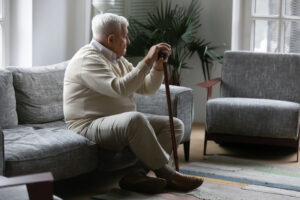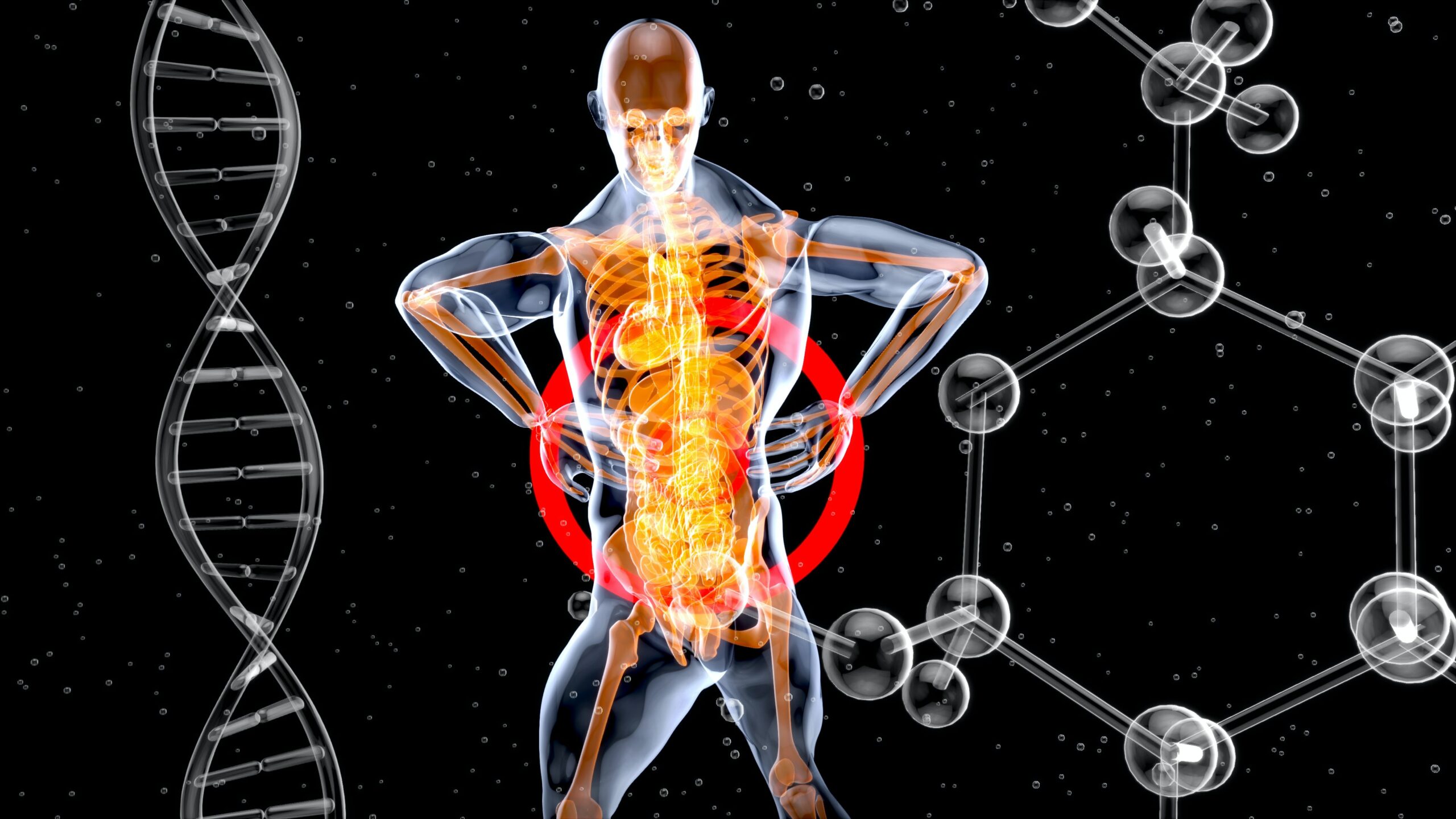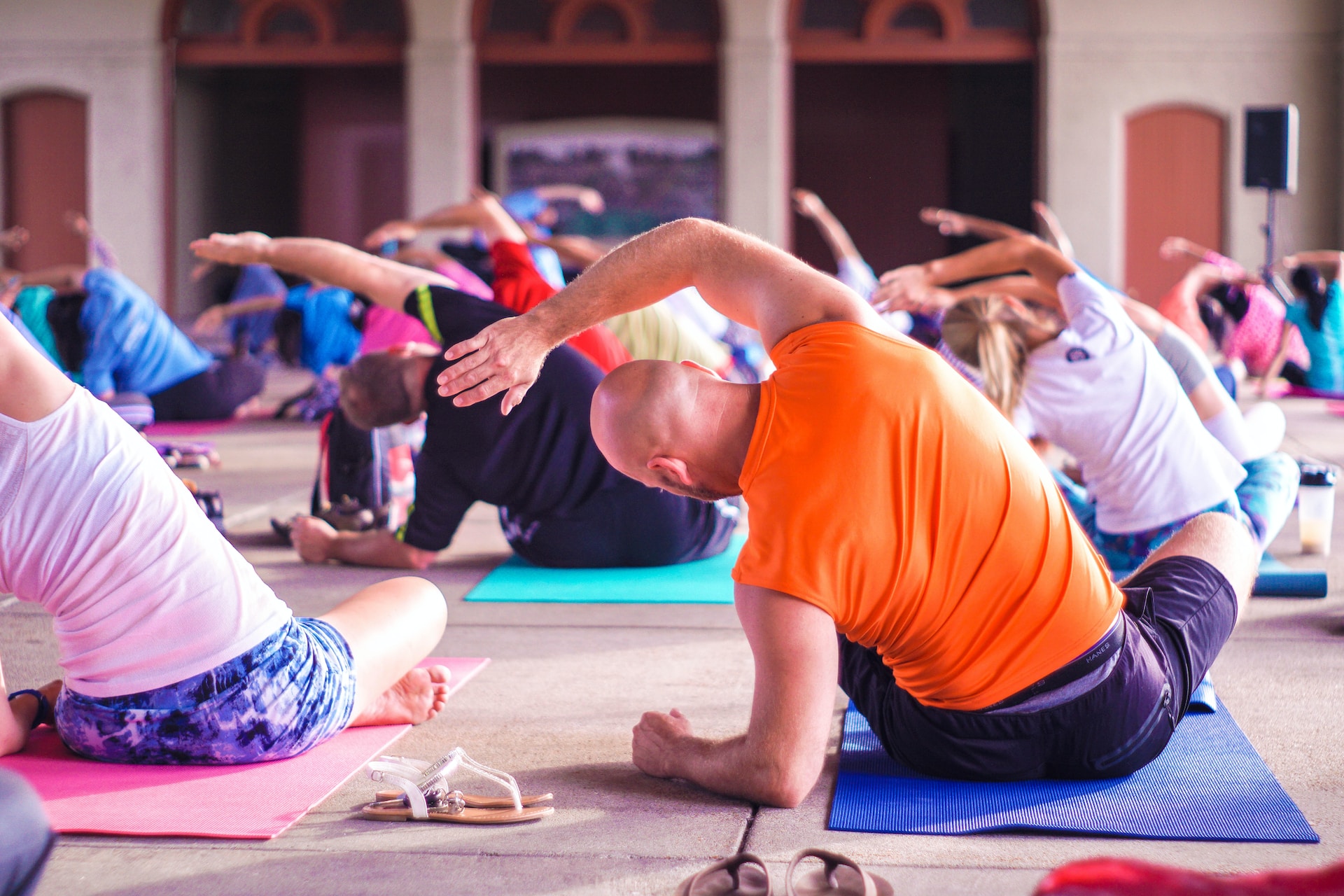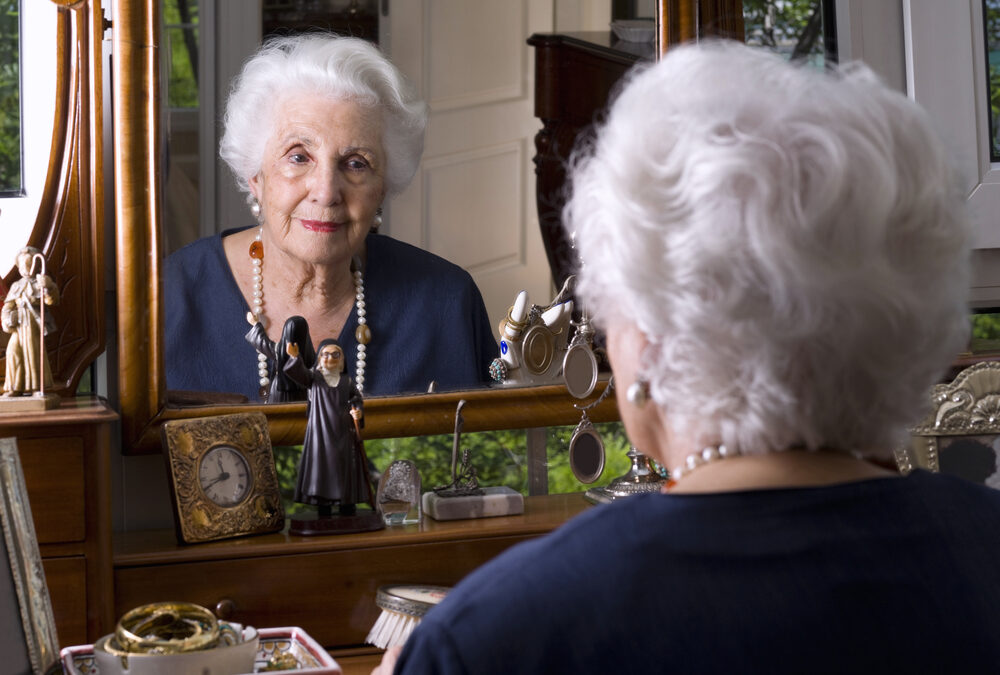I don’t remember exactly when I noticed, but my Mom, always an inch taller than me, was now an inch shorter. I had seen the same happen to other people over time, so I just understood it to be aging. But when my sister, just 5 years older than me, lost several inches, I wanted to learn more. She had always been quite short at barely 5 foot tall. But MS and osteoporosis took a greater than normal toll. Understanding the loss of height with aging is a fact of life. But the timing and amount varies greatly.

As we age, we often notice changes in our bodies, and one subtle transformation is the gradual loss of height. Remember those times when you saw your grandparents walking with a slight stoop? As we enter the later years, it’s natural to wonder when this height loss becomes more than just a sign of aging.
In this exploration, we will look into why and how loss of height with aging occurs. When should we pay attention to it, and what factors contribute to this process?
Contents
Loss of Height with Aging

Losing Height with Age / Source: Unsplash
As we grow older, our body experiences natural changes in its structure. While we cannot control some of these changes, certain lifestyle choices can speed or slow them down.
Our body comprises fat, lean tissue (muscles and organs), bones, and water. After 30 years, we start to lose lean tissue (a process called atrophy). It affects our muscles, liver, kidneys, etc.
Our bones may also see a decline in bone mineral density, causing osteopenia to osteoporosis. This loss of tissue also results in a decrease in overall body water.
Moreover, beyond the age of 30, our body fat gradually increases. Older individuals may carry almost one-third more fat than in their younger years.
Loss of height with aging is shared across different races and genders. Generally, individuals lose about half an inch every decade after 40, with a faster loss rate after 70.
The chemical composition of the body also changes. The cushion between bones, preventing them from rubbing together, retains less water and worsens over time. This settling of bones leads to a gradual loss of millimeters.
Remember that it is expected to lose about an inch of height with age. However, any shrinkage beyond an inch may cause a more severe health concern.
Various factors contribute to height loss in older adults, such as:
- Poor health
- Inadequate nutrition
- Collapsing vertebrae or compression fractures
- Compression and dehydration of the vertebrae discs
- Spinal curvature
- Decline in bone density (osteoporosis)
- Reduction of muscle in the torso, leading to a stooped posture
- Metabolic changes in the body
- Flattening of the arches of the feet
Factors Contributing to Age-Related Height Loss

Losing Height with Age / Source: Unsplash
Osteoporosis
Osteoporosis, more prevalent in women, is the leading cause of losing height with aging. It makes bones thin, weak, and porous, making them prone to fractures.
Moreover, the condition goes beyond fractures, causing a range of problems. It weakens muscles, leading to atrophy.
In addition, it can result in compression fractures, which are often painless and pose a silent danger as they may go unnoticed.
Spinal deformities like kyphosis and lordosis often stem from undiagnosed fractures, contributing to changes in posture.
Adopting a healthy lifestyle is critical to warding off osteoporosis. Ensure your diet includes 1200-1500mg of calcium daily through food sources. In addition, aim for 800 units of vitamin D daily, especially if you are over 70.
Moreover, weight-bearing exercises and resistance training can help with higher bone mass. It cuts the risk of falling by 25% and boosts growth hormone levels, which is essential for bone health.
Furthermore, adequate sleep is crucial. Aim for an eight-hour restorative sleep, and avoid carbohydrates two hours before bedtime. It will help maximize growth hormone production.
Degeneration of Spinal Discs and Drying Out of Discs
The discs in your spine act as protective cushions, safeguarding your vertebrae. However, as time passes, factors like injuries, lifestyle, and genetic predispositions can cause these discs to degenerate or dry out.
The fluid within these cushion-like structures dries up, causing them to flatten. This process increases your spine’s compression, causing loss of height over time.
Core Muscle Mass Loss
Loss of muscle mass is inevitable with aging, and several factors contribute to this decline. The core muscles are responsible for maintaining a proper upright posture. However, they lose their mass over time, especially in the torso, where the back and core muscles are found. As a result, it tends to stoop forward, resembling the posture changes seen in osteoporosis.
Poor Posture
Maintaining good posture is crucial for minimizing age-related height loss. Sitting or standing with a slouch or a hunch puts extra pressure on our spine’s discs and bones.
Over time, this pressure squeezes the discs, making them lose their cushioning and fluid. Our spine changes shape when the discs dry up and flatten due to bad posture. This not only messes up our overall spine alignment but also leads to a slow loss of height.
Moreover, bad posture can strain the muscles and ligaments supporting the spine. It may cause spine problems and height loss even higher.
Height Shrinkage with Age / Source: Align Wellness Center
Risk Factors for Height Loss
There are a myriad of factors for loss of height. While some are natural and inevitable, others may be influenced by lifestyle choices and health conditions.
Physical Activity
Sitting might seem harmless, but it can mess with your body, especially if you have a desk job. Research shows that people who sit a lot at work end up shorter by the time they finish their day. And guess what? It also gives them more pain in their upper back.
A study about folks with desk jobs found that men who sat a bunch had shorter spines and more neck pain. For the ladies, prolonged sitting is linked to both upper back pain and having less curve in their lower backs.
Surprisingly, this sitting trouble hits both genders when they do the same tasks at work.
Spending a long time sitting can mess with your spine and overall health. We must pay attention to it and find ways to care for our bodies, even if we’re stuck at a desk for hours.
Bone Density Loss
As the years advance, our bones undergo a subtle yet impactful transformation. Aging prompts a loss of bone density, making them thinner and more brittle. This reduced bone density lays the groundwork for osteoporosis.
The spine, a central pillar in our skeletal architecture, bears the brunt of this process. As vertebrae lose density, they compress like a stack of diminishing building blocks. This compression contributes to the reduction in height with age.
Imagine the spine as a tower of blocks, each losing its robustness over time. The consequence is a gradual loss of height. Beyond appearance, the decrease in bone density also increases the risk of fractures, making your body more fragile.
Genetic Factors
Loss of height with aging is also influenced by genetics. They may affect our bone density, cartilage flexibility, and skeletal structure. Genes decide the highest bone mass reached in youth, affecting how bones age.
Moreover, genes contribute to osteoporosis susceptibility, further exacerbating height loss. Differences in genetic coding can affect bone remodeling, leading to lower bone density and height. Genetic factors also make people more prone to conditions like osteoporosis, which worsens height loss.
Poor Nutrition
Diet is another crucial factor for bone health. In addition to bone loss, calcium and vitamin D deficiency may also speed up the process of height loss with age.
Remember that calcium is vital for strong bones, while vitamin D helps absorb calcium. Without enough nutrients, bones weaken, increasing the risk of fractures and height loss.
Thus, ensure your diet is rich in calcium and vitamin D to maintain a sturdy skeletal structure.
Hormonal Changes
Hormones also play a vital role in bone health and loss of height with aging. Changes in hormones, like a drop in estrogen for women during menopause and a decrease in testosterone for men, affect bone health and height.
Estrogen, an essential hormone in women, is pivotal in maintaining bone density. Its decline post-menopause accelerates bone loss, heightening the vulnerability to fractures. Similarly, lower testosterone levels in men decrease bone density and may lead to height shrinkage.
Remember that hormones regulate bone remodeling. They influence the delicate balance between bone formation and resorption. As hormonal shifts tip this balance, bones become more susceptible to vertebral fractures.
Chronic Diseases
Certain chronic conditions, like rheumatoid arthritis and other autoimmune disorders, can affect joints and bones, causing height shrinkage. For instance, rheumatoid arthritis causes inflammation, damaging joints and surrounding structures. It impacts our overall skeletal health.
The chronic nature of these conditions worsens bone loss. They aid spine compression, which directly impacts a person’s height.
Medications
Certain medications, like glucocorticoids, are common for treating inflammatory conditions. However, they may hurt bone density, contributing to loss of height. While effective in treating inflammation, they may break the delicate balance of bone remodeling, leading to decreased bone mass.
Moreover, prolonged use of these medics can weaken bones, making them more prone to fractures and compression. , directly influencing an individual’s height. Thus, understanding the side effects of such medication on bone health is essential.
How to Prevent Bone Loss?
Today, many safe and effective medications can help prevent fractures caused by osteoporosis. However, it is even more crucial to prevent bone loss by considering risk factors.
For example, your diet and lifestyle are two vital factors that can help prevent osteoporosis. Adopting lifestyle choices that support bone health throughout life would be best. Regular weight-bearing exercises, like walking, jogging, aerobics, and weightlifting, are essential. These exercises stimulate bone formation and strengthen existing bones.
Moreover, take preventive measures to avoid loss of height with aging due to bone loss. People with osteoporosis should avoid alcohol and refrain from smoking. Regular diagnosis with your doctor can help with early detection and management.
Furthermore, a well-balanced diet is also critical. Consume a nutrient-rich diet like vitamin D, calcium, magnesium, and K. It would be best to get 1,200mg of calcium daily.
Tips to Avoid Height Shrinkage Due to Bone Loss
Diet Rich in Nutrients

Nutrient-Rich Diet to Avoid Losing Height with Aging / Source: Unsplash
If your body is getting inadequate calcium, it could lead you to lose bone mass. The issue could worsen, leading to bone loss and increasing the risk of osteoporosis.
Thus, ensure that your body is getting a balance of nutrients. While calcium and vitamin D strengthen bones, the rest of your body should also be healthy.
Calcium is critical for bone structure, while vitamin D helps your body to absorb calcium. Similarly, magnesium increases bone density, and vitamin K is vital for bone metabolism.
Consume dairy products, leafy greens, nuts, and fortified foods to get these nutrients. A well-rounded diet is the building block for bones, fostering strength and resilience. These nutrients support our overall skeletal well-being while minimizing the risk of height shrinkage.
Regular Exercise

Regular Exercise Can Help Avoid the Risk of Losing Height with Age / Source: Unsplash
Lack of physical activity diminishes the mechanical stress needed for bone density. Regular exercise, significantly weight-bearing, can help you avoid the risk of bone loss and height shrinkage. Walking, running, and resistance training stimulate the bones to keep density.
The mechanical stress placed on bones during these activities makes the bone-forming cells more active. Weightlifting, in particular, promotes bone density by exerting force on the bones.
In addition, exercise also maintains joint flexibility, reducing the risk of falls and fractures. Including various physical activities in your routine slows the natural decline in bone mass as you age.
Adequate Hydration
Drink enough water for healthy bones. Water helps deliver nutrients like calcium and phosphorus to your bones. In addition, it also removes waste, keeping bones strong. Being dehydrated can mess with these processes and affect bone density.
Hydration doesn’t just help bones. It’s crucial for your overall health.
It keeps your organs working well, lubricates your joints, and regulates your body temperature. So, stay hydrated for solid bones and a healthy body.
Review Your Medications
Regularly review your medications with healthcare professionals to learn how they might affect your bone health. Note that certain drugs can impact bone density, leading to issues like osteoporosis.
Discuss any concerns or potential side effects with your healthcare provider. They can provide insights into alternatives or adjustments that may be necessary. It is vital to balance managing your health condition and minimizing any adverse effects on your bones.
Wrapping Up
Loss of height with aging is a natural process. However, addressing the associated risk factors can help prevent or slow the procedure. Factors like genetics, hormonal changes, and lifestyle choices play a role.
Focus on a balanced diet to consume nutrients and minerals that support bone health. In addition, avoid a sedentary lifestyle and exercise regularly. If you are having any issues, let your doctor know for help.
Moreover, bone density tests are crucial for preventing bone loss. It can help you take proactive measures to prevent further deterioration.
Remember that a holistic approach combining lifestyle adjustments and medical guidance can build a more resilient skeletal system. It can help reduce the impact of height shrinkage while promoting overall well-being.
FAQs
Can a bone density test help detect osteoporosis?
A bone density test(DEXA ) checks the strength of your bones. These tests can reveal your risk for osteoporosis and fractures. A bone density test (DEXA) is like an X-ray that measures body composition, telling you about body fat and muscle mass.
Moreover, a bone density test can detect broken bone and mineral density. It helps you and your doctor keep your bones strong and prevent potential issues.
Does lower bone mass cause spinal and hip fractures?
Yes, lower bone mass can lead to spinal and hip fractures. When bones lose density, they become more fragile and prone to fractures. Spinal fractures, especially compression fractures, can also lead to loss of height.
The vertebrae in the spine may collapse or compress due to weakened bones. It affects posture and your overall stature.
Similarly, hip fractures are more common in individuals with lower bone density. They impact their mobility and potentially lead to height shrinkage.
What causes vertebral compression fractures?
Vertebral compression fractures can result from various factors. However, osteoporosis is the most common culprit.
It weakened bones, making them succumb to pressure and collapse. In addition, falls and accidents can cause vertebral compression fractures, especially in individuals with low bone density.
Specific health issues like cancer or infections can aid vertebral compression fractures. As we age, we lose muscle mass, making our spine more prone to these fractures. It is vital to know these causes so that we can take steps to prevent them.
What is a healthy diet for increasing bone mineral density?
A healthy diet should comprise foods rich in calcium. These include dairy products, leafy greens, nuts, and fortified foods. In addition, vitamin D sources like fatty fish and sunlight exposure help with calcium absorption.
Protein from sources like lean meats and legumes supports bone health. Magnesium, found in nuts and whole grains, and vitamin K from leafy greens also contribute.
Beyond a healthy diet, you should also take some preventive measures. Limit caffeine, alcohol, and excessive salt is advisable.
Can losing height with age be prevented?
Losing height with age is natural, and it may be challenging to prevent it. However, confident lifestyle choices can help mitigate its effects.
For example, engage in regular weight-bearing exercises to stimulate your bone health. Maintain a balanced diet with fruits, veggies, nuts, and dairy products.
Moreover, preventive measures also play a crucial role. Avoiding smoking as it can contribute to better bone health.
In addition, maintain a proper posture to support spinal health. While complete prevention may not be possible, these measures can slow down height loss as you age.
Are there medical conditions that speed up losing height with age?
Yes, certain medical conditions can speed up height loss with age. Some common conditions linked with height shrinkage include osteoporosis, vertebral fractures, and disc degeneration. Osteoporosis weakens bones, increasing the risk of fractures and compression.
Degenerative disc disease affects the spine’s structure, leading to height loss. Managing these conditions through medical care, lifestyle adjustments, and exercises may help slow height loss.
In addition, regular check-ups are crucial for early detection and effective management. Timely detection and treatment can help slow down the process of height loss.
Welcome to Senior Parents!
Unlock the secrets to healthy aging with our senior health series!
Discover practical tips to navigate the challenges that come with aging. We’ve covered you, from managing chronic conditions to staying active and vibrant.
Learn to focus on nutrition for bone strength, adopt exercises that boost energy, and stay mentally sharp.
Our engaging content breaks down complex health topics into easy-to-understand insights. Whether you’re a senior or caring for a loved one, we aim to empower you with the knowledge and tools needed for a fulfilling and active lifestyle.
Join our community as we explore the journey of aging together. It’s time to embrace your golden years with confidence and vitality.
Facebook: www.facebook.com/sr.parents
Insta: www.instagram.com/seniorparents
Pinterest: www.pinterest.com/seniorparents
Twitter: twitter.com/senior_parents





